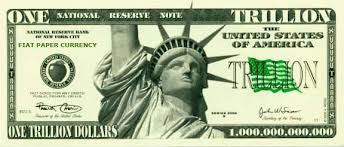Fed Prepares to Cut $4.5 Trillion Portfolio: What It Means

Federal Reserve Chairwoman Janet Yellen will be on Capitol Hill for two days of congressional testimony starting Wednesday, and investors will be closely watching the proceedings for any clues about the central bank’s plans to shrink its securities portfolio.
The Fed has begun to pave the way toward cutting its balance sheet, which grew from about $ 1 trillion to $ 4.5 trillion in five years. The large increase is the result of an aggressive bond-buying stimulus program known as quantitative easing. The program was implemented to keep interest rates low and support a collapsed housing market. Since December 2015, the Fed has gradually raised the benchmark fed funds rate from near zero amid an improved labor market and U.S. economy. But its large portfolio of Treasury bonds and mortgage-backed securities has remained in place.
With officials phasing out its crisis-era monetary policies, the Fed is now discussing a timeline to start winding down its portfolio to about half its current size.
“[The Fed] is in uncharted territory. They’ll be very cautious because they are committed to reducing interest rates and reducing the balance sheet. The first foray will be fairly limited,” said Nariman Behravesh, IHS Markit’s chief economist.
Investors have mostly prepared themselves for the Fed’s next move by anticipating an increase in interest rates. If anything, the Fed tends to “do less than the market expected,” Behravesh added.
“I think the good thing is the Fed is raising rates in an environment that’s not gangbusters, but it’s decent. Rates will go up, no question, but if they go gradually, it won’t do a great amount of damage to the economy,” he said, noting that the fed funds rate remains historically low. “Monetary policy is becoming tighter, but at the end of next year, it still won’t be tight.”
Fed members have already decided on a plan of action. Currently, the Fed purchases new bonds to replace the ones that come due. Once it starts the clock, the central bank will allow bonds to mature and roll off its balance sheet.
At their June policy-setting meeting, members of the Federal Open Market Committee set up a plan to shed as much as $ 6 billion worth of government bonds and $ 4 billion in mortgage-backed securities each month as a starting point. The Fed would raise the amount every quarter, eventually hitting a cap of $ 30 billion in Treasury and $ 20 billion in mortgage bonds per month.
Demand for bonds will weaken once the Fed stays on the sidelines, thus lowering prices and forcing interest rates to climb. (Bond yields move in the opposite direction as prices.) The magnitude of that rate increase will depend on how gradually the Fed sells off its holdings, Behravesh explained.
The benchmark 10-year Treasury yield has declined about 0.081 percentage points since the start of the year, hitting 2.36% in recent trading.
As for when the Fed will kick off the process, several officials prefer to “announce a start to the process within a couple of months,” according to minutes of their June meeting Opens a New Window.. Others believed that a decision later in 2017 would give the Fed more time to study inflation, which has fallen short of the central bank’s target, and U.S. economic activity.
The general consensus is that the Fed will make an announcement in September. In her prepared remarks to Congress Opens a New Window., Yellen affirmed that the Fed will “likely” implement the program this year, as long as the economy “evolves broadly as anticipated.”
“We do not intend to use the balance sheet as an active tool for monetary policy in normal times,” Yellen said, adding that the Fed is prepared to “resume reinvestments” if it sees a deterioration in the economic outlook.
No matter when the Fed begins to shrink its portfolio, economists expect it to move in the same way it raises interest rates: slowly.
“It’s hard to tell how slowly they are going to go,” Behravesh said, but the Fed is determined to move one step at a time. The impact on the financial and housing markets isn’t fully clear, and the Fed plans to raise the fed funds rate at the same time it dumps assets.
In June, the Fed raised the fed funds rate another quarter of a percentage point to a range of 1% to 1.25%. The next rate hike is expected in December.


